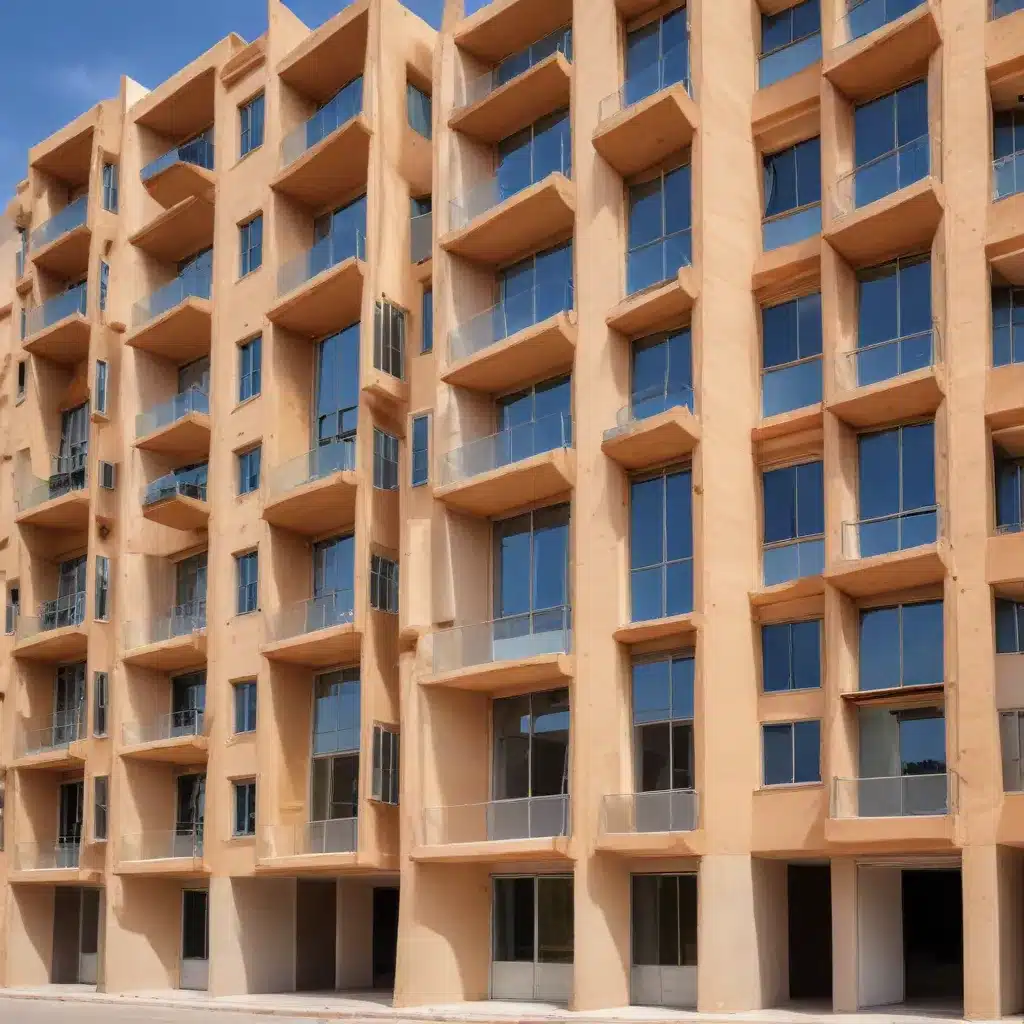
Unlocking the Potential of Sustainable Materials in Semiarid Climates
As a seasoned roofing professional, I’ve had the privilege of witnessing the remarkable strides made in the construction industry, particularly in the realm of energy efficiency. One area that has captured my interest is the integration of innovative building envelope designs to enhance energy performance in semiarid climates, such as that of Morocco.
The growing global demand for energy has heightened the urgency for sustainable building practices that can effectively reduce energy consumption in the construction sector. In this article, we’ll explore the potential of incorporating cutting-edge materials into building wall structures to achieve remarkable energy savings, with a specific focus on the Moroccan context.
Exploring the Power of Bioclimatic Design
One of the most promising approaches to improving energy efficiency in Moroccan construction is the implementation of “bioclimatic” design strategies. This involves the strategic integration of thermal insulation made from recycled textile waste and phase change materials (PCMs) into exterior wall assemblies.
According to a recent study published in the Buildings journal, this innovative combination of materials has the potential to significantly impact cooling loads more than heating demands in semiarid climates. The researchers used the dynamic simulation tool TRNSYS to analyze heat transfer through the modified wall assembly under conditions typical of Marrakech, Morocco.
The results of this study are quite remarkable. The modified building design achieved a 52% reduction in summer energy usage compared to a conventional reference building. This substantial energy saving translates to a 39% decrease in greenhouse gas emissions. Importantly, the study also confirms that this bioclimatic configuration maintains thermal comfort for occupants, with particular effectiveness during the hot summer months when cooling demands are highest.
Optimizing Thermal Performance with Recycled Insulation and Phase Change Materials
The key to the success of this bioclimatic approach lies in the strategic use of recycled textile waste for thermal insulation and the integration of phase change materials (PCMs) within the wall assembly.
Recycled textile waste is an innovative and sustainable insulation material that offers several advantages over traditional options. Not only does it contribute to the circular economy by repurposing waste, but it also demonstrates impressive thermal properties. This recycled insulation effectively reduces heat transfer through the building envelope, helping to regulate indoor temperatures and minimize energy demands for heating and cooling.
The addition of phase change materials (PCMs) further enhances the thermal performance of the wall assembly. PCMs have the unique ability to absorb and release thermal energy as they undergo phase changes (solid to liquid, and vice versa). During periods of high heat, the PCMs in the wall can absorb excess thermal energy, effectively delaying and dampening the transfer of heat into the indoor environment. Conversely, during cooler periods, the PCMs can release stored thermal energy, helping to maintain a comfortable indoor temperature.
By combining the thermal insulation properties of recycled textile waste with the dynamic heat-regulating capabilities of PCMs, the bioclimatic wall design creates a highly efficient building envelope that can significantly reduce energy consumption and greenhouse gas emissions in Moroccan buildings.
Addressing the Challenges of Semiarid Climates
The harsh realities of semiarid climates, such as those found in Morocco, pose unique challenges for the construction industry. These regions are characterized by high temperatures, intense solar radiation, and significant seasonal fluctuations in heating and cooling demands.
Conventional building materials and construction methods often struggle to effectively manage the thermal stresses and energy demands imposed by these climatic conditions. This is where the bioclimatic design approach, incorporating recycled insulation and PCMs, proves to be a game-changer.
The strategic placement of these innovative materials within the building envelope creates a synergistic system that can adapt to the variable climate. The recycled insulation helps to minimize heat transfer, while the PCMs actively manage the absorption and release of thermal energy, ensuring a more stable and comfortable indoor environment throughout the year.
Unlocking the Potential of Sustainable Construction in Morocco
The findings of the study highlighted in this article underscore the immense potential of sustainable building practices in Morocco. By embracing innovative materials and design strategies, the construction industry can unlock significant energy savings and reduce the environmental impact of buildings.
As reported by the Programme for Energy Efficiency in Buildings (PEEB), Morocco has made significant strides in recent years to promote energy efficiency in the built environment. The country has established national alliances and policies to drive the adoption of sustainable construction practices, laying the foundation for a more energy-efficient future.
Furthermore, recent research published in the Energy and Buildings journal has identified the importance of focusing on building envelope design as a key strategy for enhancing energy efficiency in Moroccan construction. The study emphasizes the need for holistic approaches that consider the integration of high-performance materials and innovative design solutions to address the unique climatic challenges of the region.
Conclusion: Shaping a Sustainable Future for Moroccan Construction
As a roofing professional, I am excited by the prospects of integrating innovative building envelope designs into Moroccan construction. The remarkable energy savings and greenhouse gas reductions demonstrated by the bioclimatic approach, with its use of recycled insulation and phase change materials, offer a promising pathway towards a more sustainable built environment.
By embracing these cutting-edge materials and design strategies, the construction industry in Morocco can lead the way in demonstrating the transformative power of sustainable building practices. As we continue to navigate the challenges of rising energy demands and environmental concerns, the insights and case studies presented in this article can serve as a valuable resource for roofers, architects, and construction professionals committed to shaping a greener, more energy-efficient future for Moroccan buildings.
To learn more about the Roofers in Northampton and our commitment to sustainable roofing solutions, I encourage you to explore our website. Together, we can forge a path towards a more energy-efficient and environmentally responsible built environment, one roof at a time.

